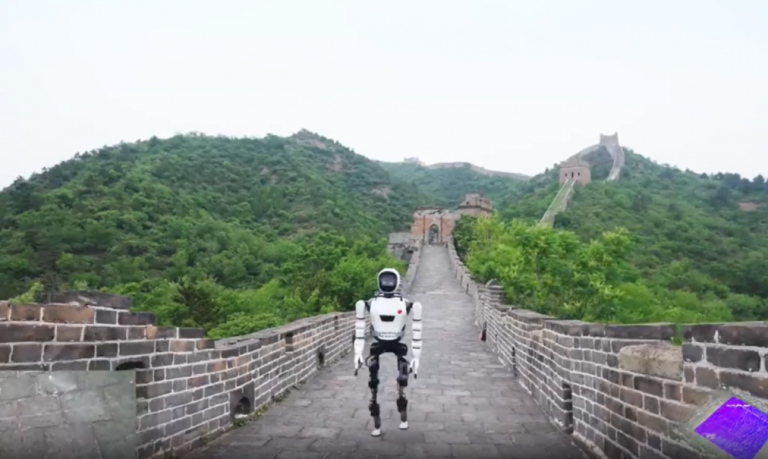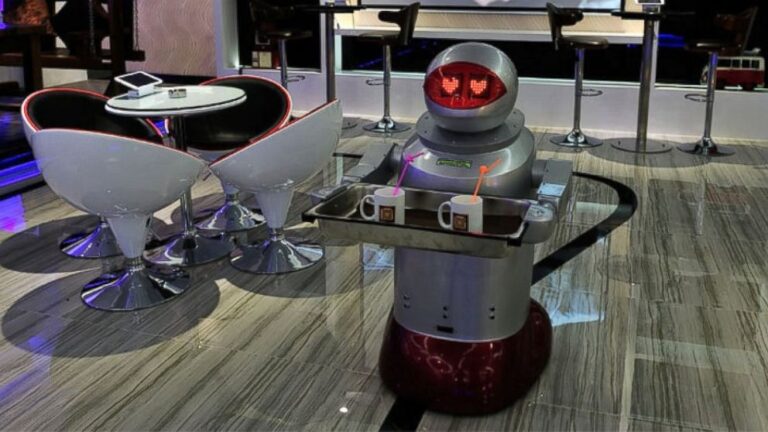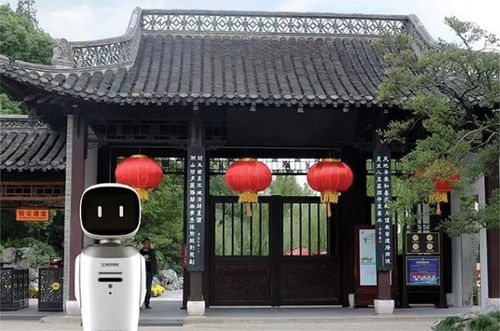
China Robotics Rise 6 – Robotics Application in Tourism in China

Imagine arriving at a futuristic hotel where a friendly robot greets you at the check-in desk, transports your luggage to your room, and even provides personalized recommendations on local attractions. This is not science fiction, but a reality in the rapidly evolving Chinese tourism sector. The integration of robotics technology is transforming the travel experience, making it more efficient, enjoyable, and innovative. This article explores the various applications of robotics in the Chinese tourism sector, showcasing specific examples and discussing potential future developments.

1. Robots for customer service
One of the main applications of robotics in the Chinese tourism sector is customer service. Robots are being used in hotels, airports, and tourist attractions to interact with visitors and provide assistance. These robots are equipped with advanced artificial intelligence (AI) and natural language processing (NLP) capabilities, which enable them to understand and respond effectively to human queries.
The FlyZoo Hotel
The FlyZoo Hotel in Hangzhou, operated by Alibaba’s travel division, Fliggy, is a prime example of robotics in customer service. This futuristic hotel employs robots for various tasks, including check-in, room service, and concierge services. Guests can check in using facial recognition technology, and robot butlers deliver items to their rooms. This technology reduces the need for human staff and minimizes waiting times, significantly improving the efficiency and convenience of the guest experience.
Beijing Capital International Airport
Beijing Capital International Airport has introduced customer service robots to assist travelers with information and directions. These robots, equipped with multilingual capabilities, help passengers navigate the airport, find their gates, and answer common questions. By providing real-time information and guidance, these robots enhance the overall travel experience and reduce the stress associated with navigating a busy airport.
2. Robotic tour guides
Tour guides play a crucial role in enriching the travel experience by providing insights and historical context about tourist attractions. In China, robotic tour guides are becoming increasingly popular, especially in museums and cultural sites. These robots offer consistent and accurate information and can interact with tourists in multiple languages.
The National Museum of China
The National Museum of China in Beijing has introduced robotic tour guides to enhance visitor engagement. These robots, equipped with AI and interactive touchscreens, guide visitors through the museum’s exhibits, providing detailed information about the artifacts and their historical significance. Robotic tour guides can answer questions and offer a personalized tour experience, making the museum visit more informative and enjoyable.
The Terracotta Army Museum in Xi’an
At the Terracotta Army Museum in Xi’an, robotic tour guides offer an immersive experience for visitors. These robots explain the history and significance of the Terracotta Warriors, using multimedia presentations and interactive displays. By incorporating robotics, the museum can provide an engaging and informative tour that captivates visitors of all ages.

3. Security and surveillance robots
Ensuring the safety and security of tourists is a top priority in the tourism sector. In China, robotics technology is being used to enhance security measures at tourist attractions and public spaces. Security robots are equipped with cameras, sensors, and AI algorithms to monitor crowds, detect suspicious activities, and respond to emergencies.
OCT Bay in Shenzhen
OCT Bay in Shenzhen, a popular tourist destination, employs security robots to patrol the area and monitor for potential security threats. These robots are capable of identifying unusual behavior, such as unattended bags or individuals in restricted areas, and can alert human security personnel for further investigation. The presence of security robots not only enhances safety but also provides a sense of security for visitors.
Tiananmen Square in Beijing
Tiananmen Square in Beijing, one of the most visited sites in China, has integrated security robots to ensure the safety of tourists. These robots utilize facial recognition technology to identify individuals and can detect unauthorized drones in the area. By leveraging robotics, authorities can efficiently manage security and respond promptly to incidents, ensuring a safe environment for visitors.
4. Robotic entertainment and interactive experiences
In addition to practical applications, robotics technology is also being used to create entertaining and interactive experiences for tourists. From robotic theme parks to interactive shows, robotics adds a unique and engaging element to the travel experience.
Chimelong Ocean Kingdom
The Chimelong Ocean Kingdom in Zhuhai features robotic performances and interactive exhibits that captivate visitors. The park’s robotic dolphins and whales perform synchronized shows, demonstrating the capabilities of robotics in entertainment. Additionally, interactive robotic exhibits educate visitors about marine life and conservation efforts, combining entertainment and education.
Window of the World Theme Park
The Window of the World Theme Park in Shenzhen features robotic dancers and performers in its cultural shows. These robots, designed to mimic human movements, participate in traditional Chinese dance performances, offering a unique blend of technology and culture. The integration of robotics into the park’s entertainment offerings creates a memorable and innovative experience for tourists.

5. Robotic luggage handling and transportation
Luggage handling is often an inconvenient aspect of travel. In China, robotics technology is being used to streamline luggage handling and transportation, making the travel experience more convenient for tourists.
Guangzhou Baiyun International Airport
Guangzhou Baiyun International Airport has implemented robotic luggage handlers to assist travelers with their bags. These robots can transport luggage from check-in counters to boarding gates, reducing the physical strain on passengers and ensuring efficient luggage management. The use of robotic luggage handlers improves the airport’s operational efficiency and the overall passenger experience.
Henn-na Hotel
The Henn-na Hotel in Shanghai employs robotic luggage handlers to assist guests with their bags upon arrival. These robots can navigate the hotel’s corridors and elevators, delivering luggage directly to guests’ rooms. Robotic luggage handlers not only offer convenience but also add a futuristic touch to the hotel stay.
6. Challenges and future prospects
While the application of robotics in the Chinese tourism sector offers numerous benefits, it also presents some challenges. The high initial cost of implementing robotics technology, the potential displacement of human labor, and the need for continuous maintenance and upgrades are some of the challenges that need to be addressed. Additionally, ensuring data privacy and security is crucial, especially when using AI and facial recognition technologies.
Despite these challenges, the future prospects of robotics in the Chinese tourism sector are promising. Advances in AI, machine learning, and robotics will continue to improve the capabilities of robots, making them more efficient and versatile. The integration of robotics with other emerging technologies, such as augmented reality (AR) and virtual reality (VR), will further enrich the travel experience, offering tourists new and innovative ways to explore and interact with their destinations.
7. Conclusion and our perspective
The application of robotics in the Chinese tourism sector is transforming the way people travel and experience new places. From customer service and guided tours to security and entertainment, robots are improving the efficiency, convenience, and enjoyment of the travel experience. As technology continues to evolve, the role of robotics in tourism is expected to expand, offering even more innovative solutions and opportunities for the sector. By embracing robotics, the Chinese tourism sector can continue to thrive and attract visitors from around the world, providing them with unique and memorable experiences.
Written by Marco Bonaglia



